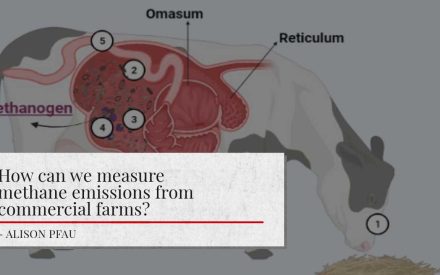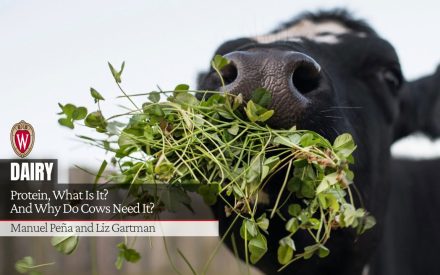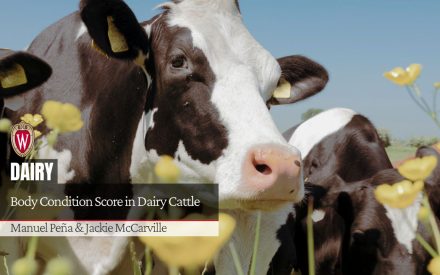The contribution of the dairy production system to climate change is small compared to electricity generation or transportation. The U.S. EPA’s 2022 report showed that the contribution of the agriculture sector to the total greenhouse gas (GHG) emissions in the U.S was around 10% on a million metric tons of carbon dioxide equivalent (MMtCO2e) basis in 2020 (Figure 1), and about 39.5% of this 10% is represented by livestock methane emissions from the enteric fermentation and manure management.
Methane: Dairy production and climate impact
Methane is a greenhouse gas that has 28 times the warming potential of carbon dioxide and is an area of concern in animal agriculture. Despite the small contribution of agriculture, dairy production systems are positioned to be an essential part of the solution by developing strategies for greenhouse gas reduction.
The reduction of methane emissions by the dairy industry is critical because it can result in a near-immediate mitigation of the warming impacts, due to the short lifetime of the methane in the atmosphere
Mayerfeld et al., 2023
Figure 1. Total U.S. Greenhouse Gas Emissions by economic sectors in 2021. Source: US EPA Greenhouse Gas Inventor Explorer https://www.epa.gov/ghgemissions/sources-greenhouse-gas-emissions
Ruminants and Methane Production: The Microbial Interactions
Methane is produced in livestock due to the unique ecosystem of the rumen that provides an ideal environment to maintain different populations of microorganisms, including those that produce methane. The microbe populations are in permanent interaction through various strategies such as mutualism (benefits for both microorganisms), commensalism (benefits for one without influencing the other), parasitism (benefits for one at a disadvantage for the other), and competition (several microorganisms compete by substrate or by space), allowing the ruminant to obtain the essential nutrients for its nutrition through microbial fermentation processes (Restrepo et al., 2005). In the rumen exist a class of bacteria known as methanogens. These bacteria convert hydrogen and carbon dioxide into methane within the rumen. Methane represents around 30-40% of the gasses in the rumen, which are expelled from the animal by belching. The importance of this gas production is increasing due to the large number of animals and the type and amount of feed they are consuming, producing most methane gasses per unit of feed consumed (Figure 2)
Figure 2. Process of methane production in ruminants. (Adapted from Zhao et al., 2020)
Exploring Feed Additives: Inhibitors and Fermentation Modifiers
With fewer farms on the landscape and more cows per farm, the beef and dairy industries recognize the dual importance of feed quality on feed efficiency and methane production. One of the strategies that have been increasingly explored is the use of feed additives to reduce enteric methane emissions. These additives employ different modes of action by changing the structure or the role of some key drivers of methane formation, acting as methane inhibitors, or as rumen fermentation modifiers (Table 1). Some of the most popular additive inhibitors are 3-nitrooxypropanol (3-NOP) and red seaweed (Asparagopsis taxiformis). The rumen fermentation modifiers, on the other hand, lead to favorable changes in the rumen environment, improving animal productivity, animal health, and efficiency and increasing the availability of dietary protein for the animal by protecting the protein from microbes’ utilization. These fermentative modifiers additives are composed of ionophores, tannins, and essential oils. Some of these inhibiting or modifying feed additives are commercially available, while others are still in the research stage (Figure 3).
Figure 3. Methane reduction from feed additives. (Adapted from Kebreab. E., and Feng. X., 2021)
The accomplishment of the ruminant production systems in the U.S and around the world to reduce the emissions of greenhouse gasses is tremendous. The results have led to improvements in animal performance and a growing supply of milk while minimizing the environmental impact from livestock GHG emissions. However, more research is necessary on these feed additives to understand the regulatory policy, feasibility of implementation, and the economic impact of those to the dairy and beef producers.
Table 1. General characteristics and mode of action of different feed additives in the dairy and beef industry.
| Feed additive | Mode of action | Characteristics |
| 3-nitrooxypropanol (3-NOP). | Methane Inhibitor | Bovaer, 3-NOP is approved for use in Europe, some countries in Latin America and other countries around the world3-NOP has not been approved yet by the FDA3-NOP inhibits methane by acting similar to the enzyme responsible for the last step of methane synthesis in the rumen.Different studies have shown an effective reduction of methane of 28%- 36% in dairy cattle as well as an increase in milk fat content of 0.19%, or 0.21 pounds per day by feeding animals around 123 g of 3-NOP per dayA 50% reduction in methane production was also seen in beef cattle |
| Red Seaweed | Methane Inhibitor | Seaweeds are macroalgae and multicellular organisms that grow in marine and freshwater environmentsSeveral species of seaweed have been suggested as an ingredient in the diet of ruminants, due to the digestibility, and the concentrations of secondary metabolites that achieve the mitigation of methane gas productionRed algae contain high concentrations of bromoform and the function of this is to prevent the binding between the vitamin B12 cofactor (necessary for methane formation) with an enzyme, causing the non-formation of methaneSeveral studies demonstrated the reduction of methane production per kg of dry matter intake of up to 55% in dairy cattle and around 98% in beef cattle.Consequently, in dairy cattle showed some residue of iodine and bromide concentrations in the milk and impacts on the animal health and performance |
| Ionophores | Rumen Fermentation modifiers | Ionophores, such as lasalocid, monensin, salinomycin, laidlomycin, and narasin, are antibiotics that are used in cattle to modify ruminal fermentation patterns to improve feed efficiency and performanceTarget and impact the bacteria in charge of the acetate and butyrate from glucose productionBy decreasing the methane production and increasing propionate production, at the expense of acetate, ionophores can potentially improve the efficiency of available feed energy and utilization of the fermentative process.Ionophores have been found to decrease methane production up to a rate of 31%, in vitro and in vivoIonophores supplementation produced a modest reduction of methane production of 2% in dairy cattle and 15% in beef cattle |
| Tannins | Rumen Fermentation modifiers | They are present in different concentrations in some plant tissues, especially in the dicotyledons, and are an important component of many types of plants’ defense systems.One of the most recognized function of the tannins is the ability to bind to and denature proteins, reducing protein breakdown in the rumen by microbesSome tannins exhibit bactericidal activities: they can adhere to bacterial membranes, especially in methanogenic bacteria and generate morphological changes, nutritional deficiencies and reducing the bacteria’s growth.Tannins have shown the potential for reducing methane emissions by 13% to 16% in dairy cattleConsequently, the excess of tannins in the diet can cause less consumption of feed, due to the difficulty for cattle to digest these tannins, impacting animal performance |
| Essential oils | Rumen Fermentation modifiers | Essential oils, like tannins, are volatile aromatic secondary metabolites compounds produced by plants, especially herbs and spicesOne of the principal functions of essential oils is antiseptic and antimicrobial activityDifferent studies demonstrated that the use of essential oils could decrease intra-ruminal nitrogen turnover and nitrogen excretion, slow degradation of starch-rich substrates, and inhibit methanogenesisRecent studies demonstrated a reduction of 11% to 20% of methane intensity (methane/productive output for the cow; methane production/kg of energy corrected milk) in dairy cows supplemented with an Agolin concentration of 1g/head/day |
Resources
- https://cropsandsoils.extension.wisc.edu/articles/methane-emissions-from-livestock-and-climate-change/
- https://www.epa.gov/ghgemissions/sources-greenhouse-gas-emissions
- Zhao, Yiguang, et al. “A review of enteric methane emission measurement techniques in ruminants.” Animals 10.6 (2020): 1004. https://doi.org/10.3390/ani10061004
- Kebreab, Ermias, and Xiaoyu Feng. “Strategies to reduce methane emissions from enteric and lagoon sources.” Contract 17RD018 (2021): 57. Strategies to Reduce Methane Emissions from Enteric and Lagoon Sources
- Bačėninaitė, Dovilė, Karina Džermeikaitė, and Ramūnas Antanaitis. “Global warming and dairy cattle: How to control and reduce methane emission.” Animals 12.19 (2022): 2687. https://doi.org/10.3390/ani12192687
- Almeida, Amelia K., Roger S. Hegarty, and Annette Cowie. “Meta-analysis quantifying the potential of dietary additives and rumen modifiers for methane mitigation in ruminant production systems.” Animal Nutrition 7.4 (2021): 1219-1230. https://doi.org/10.1016/j.aninu.2021.09.005
- Caprarulo, Valentina, et al. “Innovations for Reducing Methane Emissions in Livestock toward a Sustainable System: Analysis of Feed Additive Patents in Ruminants.” Animals 12.20 (2022): 2760. https://doi.org/10.3390/ani12202760

 How can we measure methane emissions from commercial farms?
How can we measure methane emissions from commercial farms? Protein, What Is It? And Why Do Cows Need It?
Protein, What Is It? And Why Do Cows Need It? ▶️ Watch: Hay There! Let’s Talk Feed Centers and Inventory
▶️ Watch: Hay There! Let’s Talk Feed Centers and Inventory Body Condition Score in Dairy Cattle
Body Condition Score in Dairy Cattle


